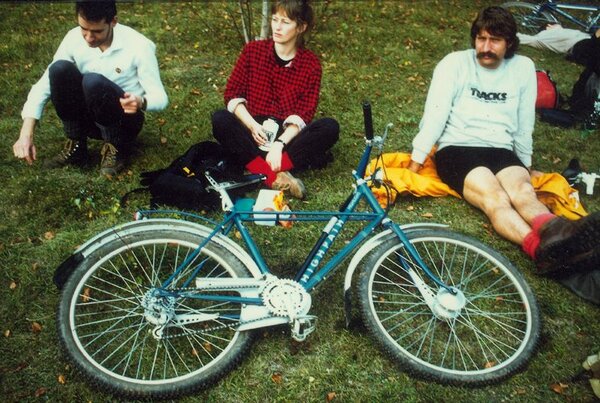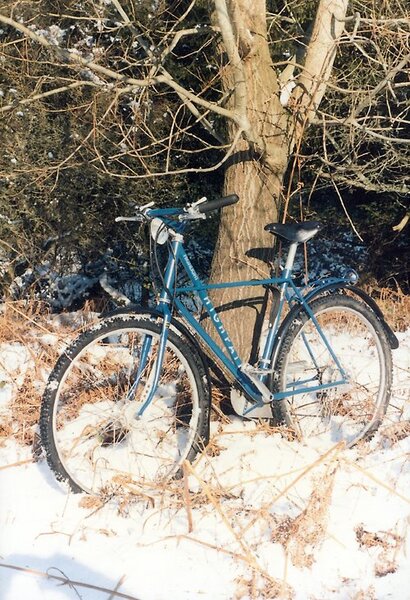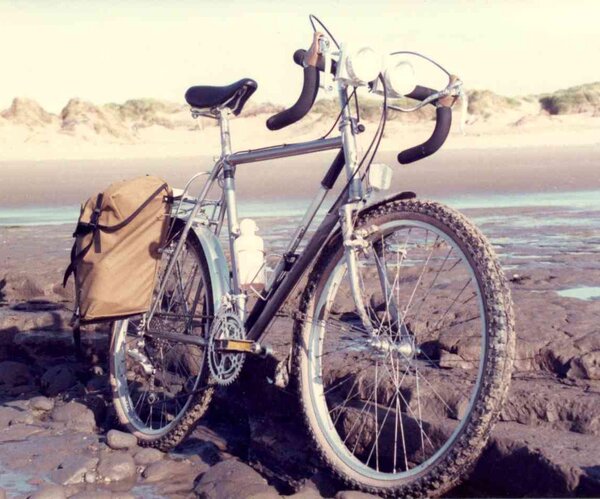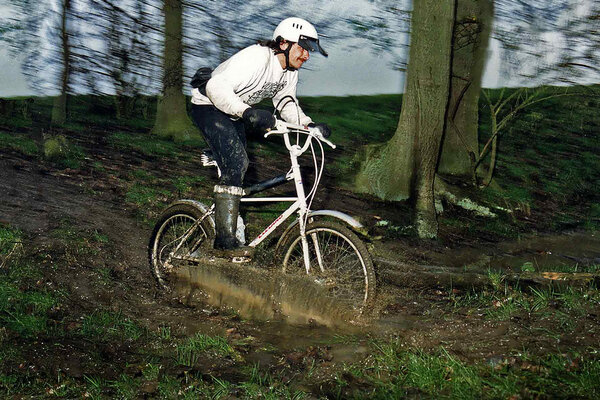Retro Spud":hlf4yxye said:
They just don't look racey... and more akin to an off road version of a Dutch town bike to plod around the woods on.
I'm sure a few must have been raced at somepoint.. Has anyone got a pic or two of one being hammered as I just can't picture it in my mind.
Hi Spud, I know exactly what you mean and trying to explain to a 'Mountain Biker' that a Cleland also a good design is like tying to convince a fan of rally cars that a series one Land Rover is also cool in its own way.
Below is a picture of my first off-road bike from 1984:
When I rode this off-road alongside Clelands in the Chilterns, North Downs, Wiltshire etc. I found that the Clelands were not only more comfortable to ride but also faster. So despite initially rejecting the Cleland design for an American style bike I also bought a Cleland. The notion that Clelands can only travel slowly and over easy terrain is based on the speculation of people who have not ridden them or alongside them.
To a Cleland enthusiast there are aesthetically pleasing well proportioned examples and those that don't quite look right, just as is the case with mainstream US MTBs. I guess that its the case that if you love racy & sporty bicycles then you are going to overlook the more functional aesthetics of a Cleland.
As for Clelands being raced, yes that did happen though race events were few and far between back then with only two race events taking place in the UK in 1984 and not many more in 1985.
Here is a discussion with Geoff Apps relating to Clelands competing in the Small Dole event in 1985:
SC: My first experience of a Cleland was in 1982, at the end of the London to Brighton Bike Ride. I saw two guys riding them, and one, who had a similar height and leg length to me, let me try his machine. It was such an easy bike to ride, and I was hugely impressed with the ability to stop without putting a foot down whilst deciding whether to go right or left. The riding position was so comfortable. I asked the guy who lent me his bike how he had handled the ride up Ditchling Beacon. “No problem.” Said he.
GA: It’s a shame you didn’t get to buy one of the originals.
SC: Why didn’t I buy an Aventura back then? I was totally un-impressed with tubing used to create it. My second experience was at the first-ever mountain bike meet in Europe, on the bone dry chalk motocross course at Small Dole, on the South Downs.
GA: I well-remember the Small Dole event.
SC: This meet was organised by Shimano and their rep went mad when not a single mountain bike made it all the way down (all the riders fell off) but all your bikes did; the scumbags wouldn’t give you the prize because you hadn’t fielded six machines.
GA: We rode down to Small Dole from Guildford, it turned-out to be far further than we had anticipated, about 50 miles I think, we were all exhausted. That’s why the Cleland Team on the downhill could only muster five riders; none of us was very keen! Nevertheless, I couldn’t believe our time, it was more than ten seconds inside the winner’s time, and it was only a short run. I don’t think ALL the other riders fell off, but I’m sure that all the other teams had at least one rider crash. No-one was impressed with our performance, they said it was because our team was more experienced. Since when has experience been a disqualification?
Also, here is a head-cam video of me riding a 1988 Highpath made Cleland, overtaking a much fitter rider on a 'race bred' Overbury's Pioneer. The Overbury's rider now owns a Cleland.
[vimeo]https://vimeo.com/17659045[/vimeo]



